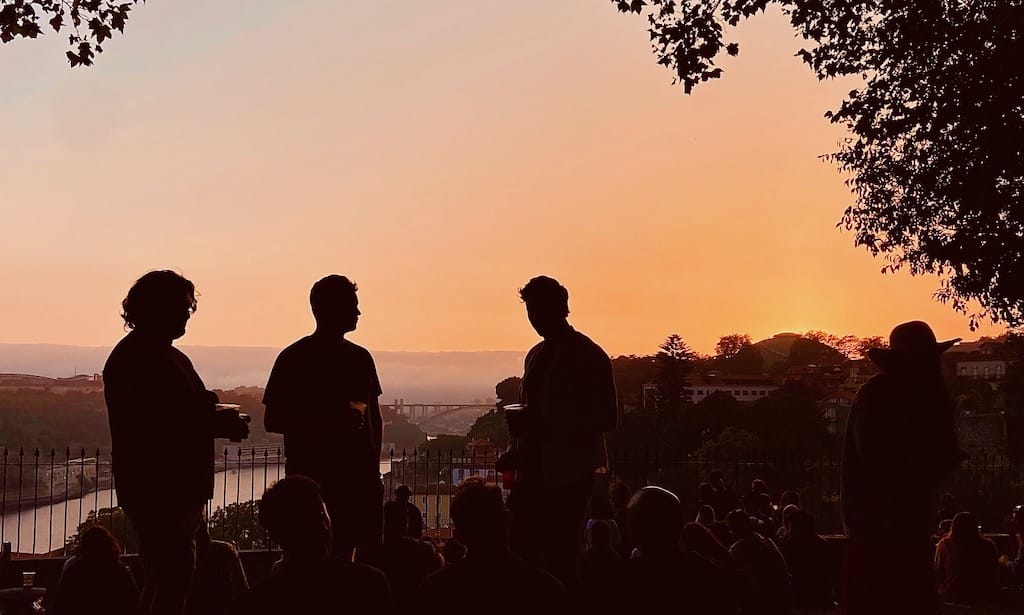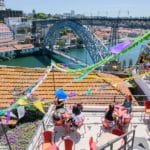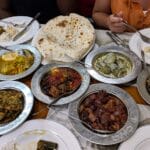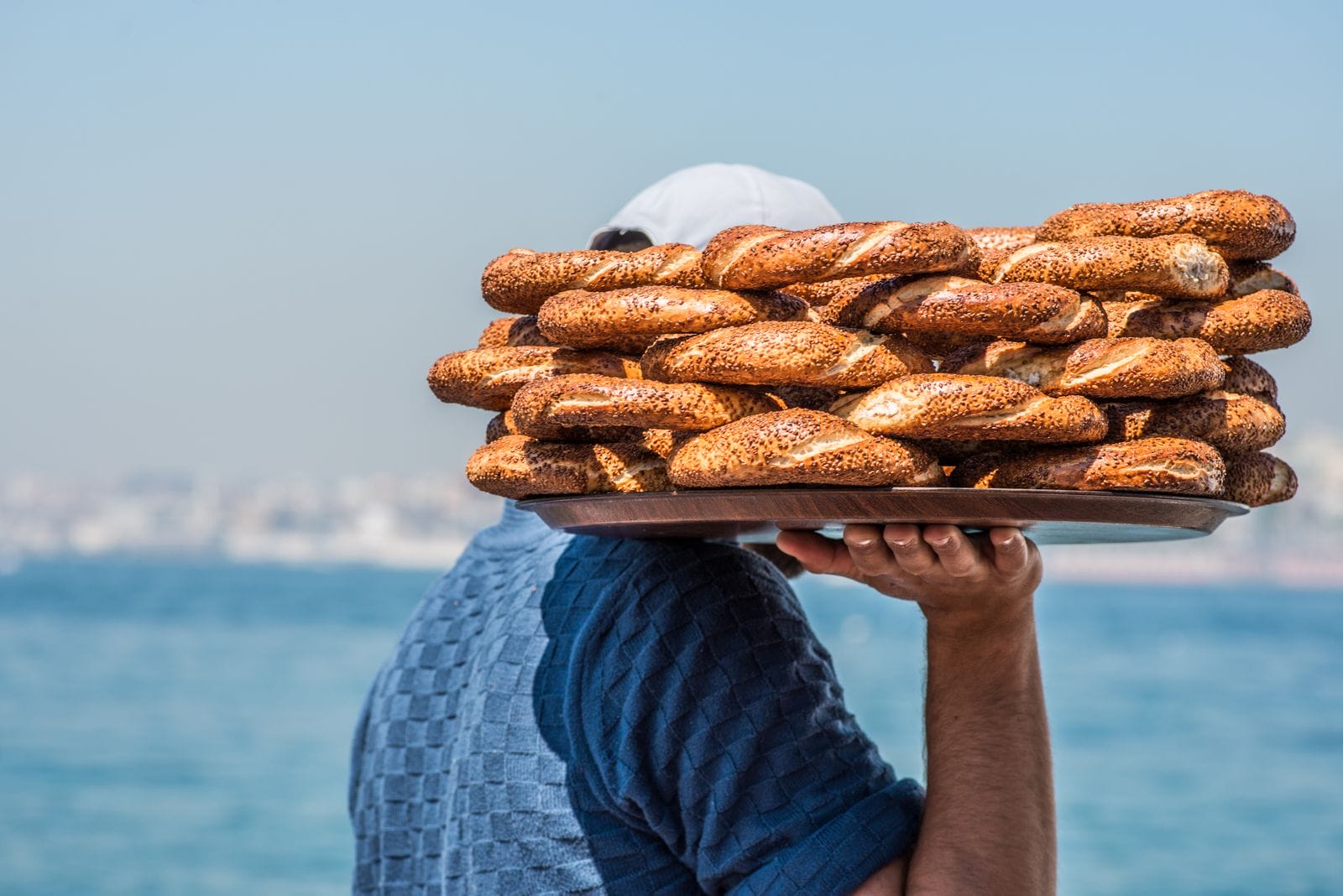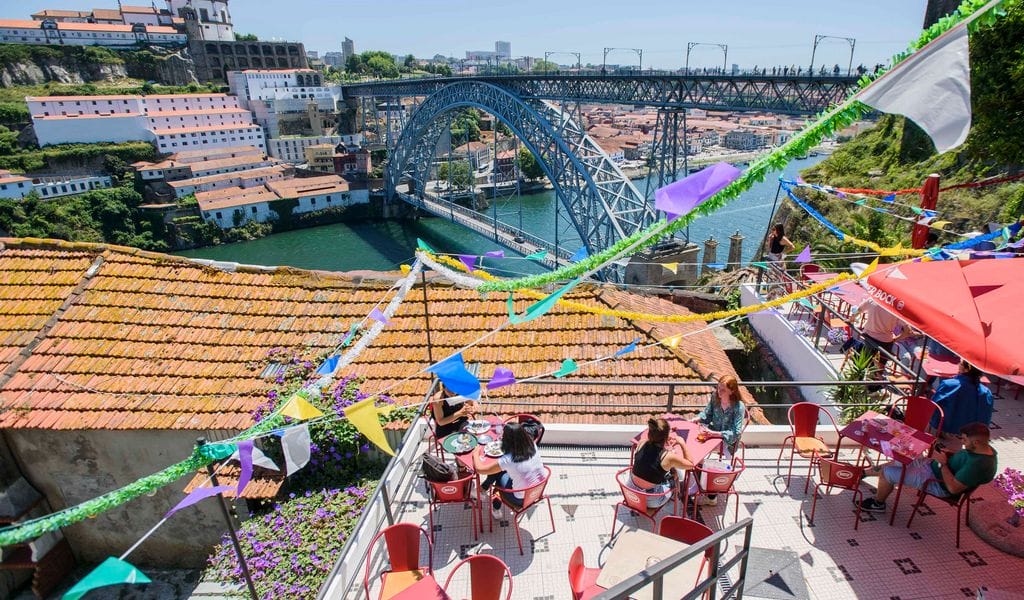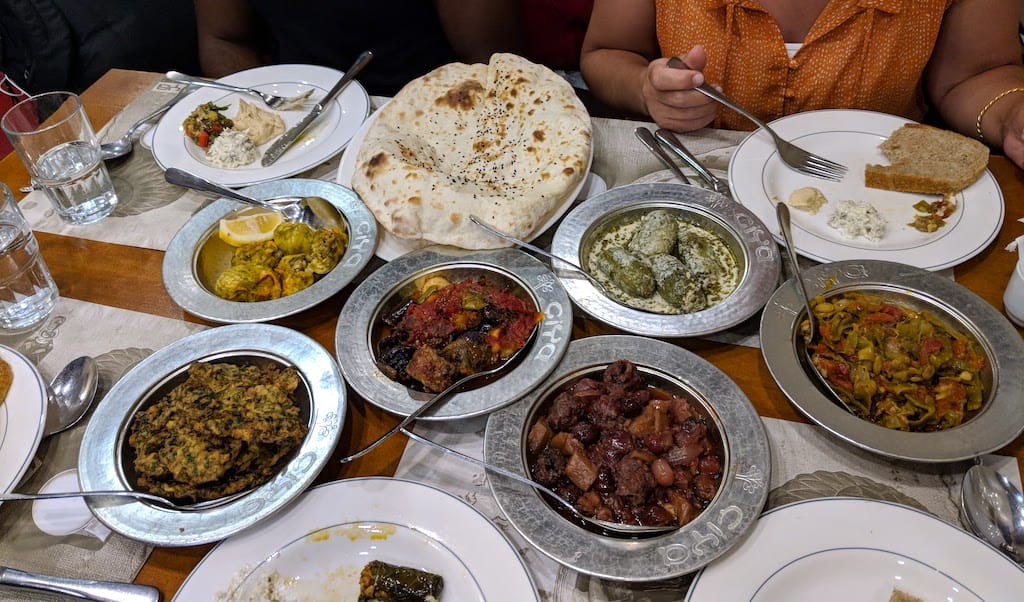In the song that became almost an anthem of Porto, the famous songwriter Rui Veloso describes the city where he was born in phrases like “of this beautiful and darkening light” and “seeing you abandoned like that in that brownish timbre.” Certainly, Veloso, one of the best-known artists in Portuguese music, wasn’t thinking about Porto during the springtime. Portugal’s second city is completely transformed when the season of flowers arrives: the weather and the mood gets sunny, lively, and colorful, an invitation for locals and tourists to go outdoors.
Flowers bloom in parks, and tables in cafes and bars are crowded with people. It is the prelude of the effervescent life of the city taking shape. The portuenses (as the locals are called) know how to enjoy the city when the temperatures get warmer and the days get longer. Spring days in Porto involve strolling through the gardens, admiring the Atlantic Sea or the Douro River, and taking advantage of the extra hours to have a glass of wine or beer on a terrace.
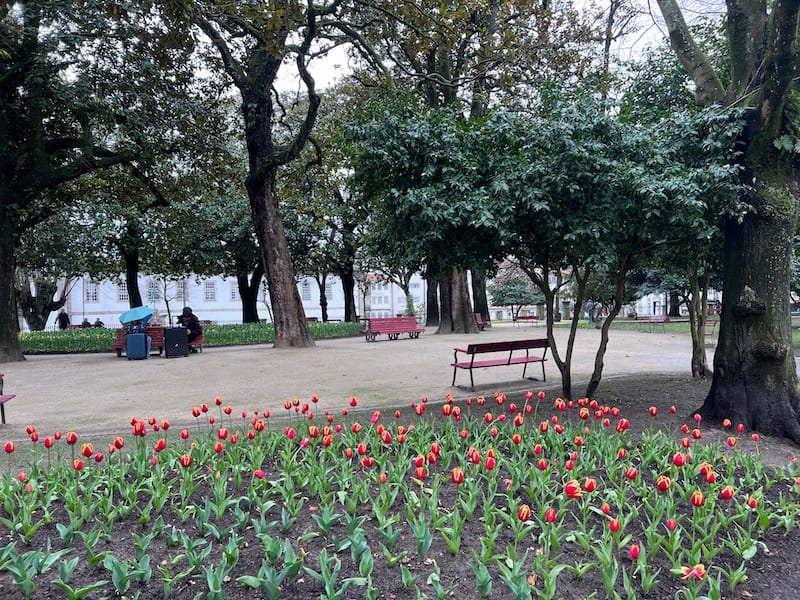
For me, a perfect spring day has to start, of course, with coffee. Combi Coffee Roasters, tucked in the Bonfim neighborhood, is one of the pioneer specialty coffee shops in the city, where a cold brew and a pastel de nata can be excellent choices for a morning boost of energy. But instead of sitting at one of the cramped indoor tables, order takeout and relax on benches in Jardim de São Lázaro, filled with pink, yellow, and white tulips when spring arrives. It is an opportunity to read a little or watch the comings and goings of tourists and couples in love that dominate the verdant landscape.
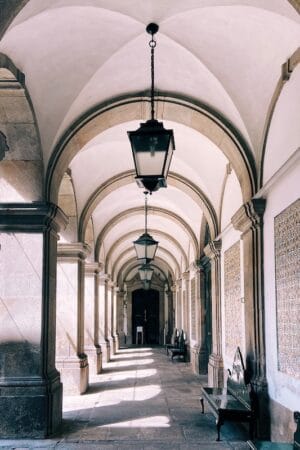
The Municipal Library of Porto, just across the street, is also worth a quick visit. Founded in 1833 and placed at the former Santo António da Cidade Convent, the oldest library in the city displays printed documents and manuscripts from the Middle Ages to our times. But it is the XVIII century construction that catches its visitors’ attention, from semicircular arches to tiles from different times, such as Hispano-Moorish azulejos originally from the Convent of Santa Clara, now installed here.
When hunger strikes, cross the square and a Porto institution, Casa Guedes, awaits right on the corner. In 1987, the Correia brothers acquired the old “Snack Bar Guedes” and transformed it to serve cheap, popular meals, such as hot dogs, francesinhas, and their roasted pork shank sandwich, which became an instant hit – and a symbol not only of the venue but also of the city’s gastronomy scene. Some prefer to order the sandwich – with thin slices of pork stuffing a crusty bread roll – with queijo da Serra, the traditional Portuguese sheep’s milk cheese made in Serra da Estrela. To better taste the seasoning (with garlic, pepper, and bay leaf), I prefer just the meat on the bread.
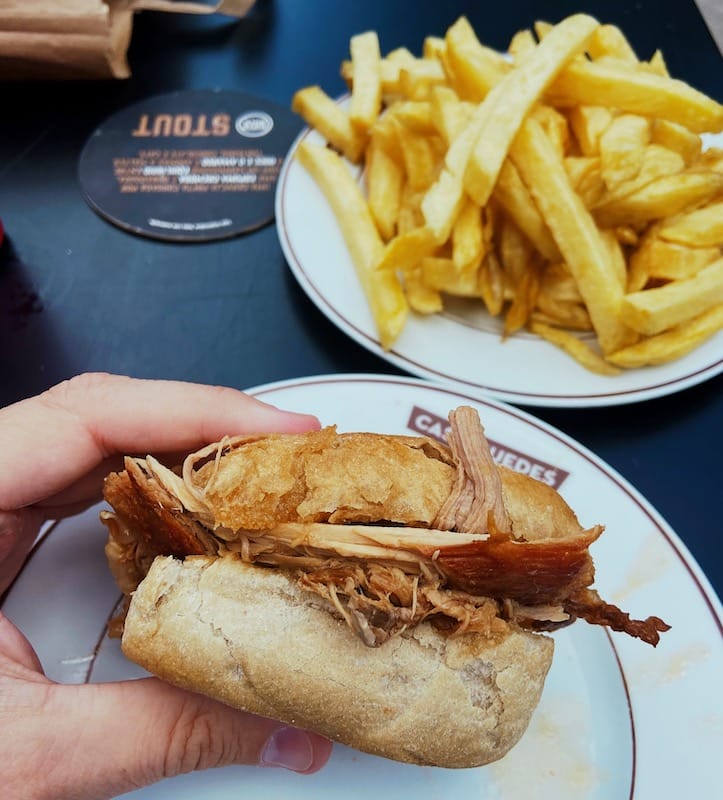
To kill time until your next meal, there’s no better plan than visiting Serralves, the city’s contemporary art museum. Go for the valuable collection of modern art featuring artists spread throughout an exhibition area designed by Pritzker-winning architect Alvaro Siza, but stay longer for the beautiful park that is part of the property. It spans 18 hectares with formal gardens, woodlands, and even a traditional farm with cattle and other animals. Conceived by architect Jacques Greber in the 1930s, it constitutes a singular reference within Portugal’s landscape with roughly 200 species and a variety of indigenous and ornamental exotic plants, flowers, and even sculptures by renowned artists that subvert the logic of scale and propose a direct relationship of art with nature.
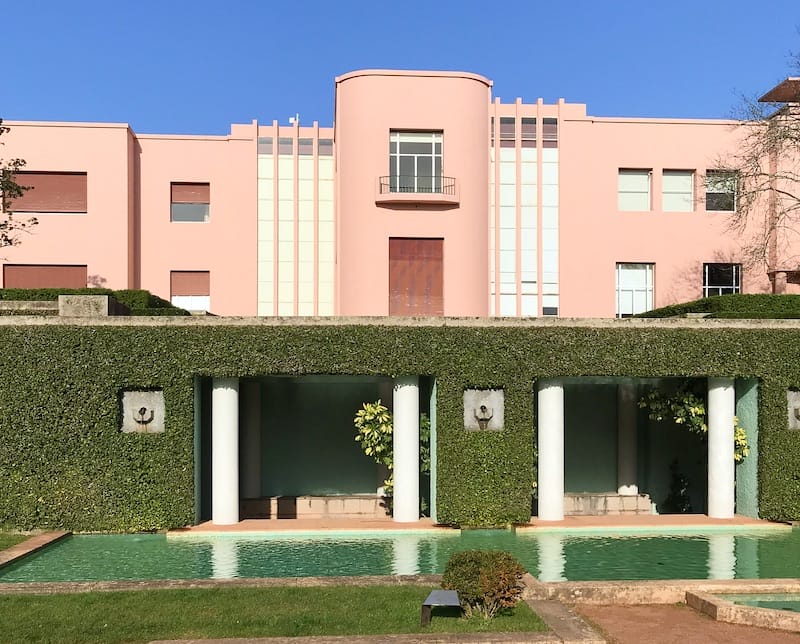
Time to change the landscape: Porto shows all its beauty when you admire it facing the Douro, the ubiquitous river that cuts through the entire city. If the views of Ribeira, one of the most touristic areas of the city, are already familiar to many people, there are other hidden corners from where one can glimpse the riverscape from different angles. In Jardim das Virtudes, a garden built in ledges, the perspective from above allows for another view of the Douro and Port wine cellars in Gaia, far from the crowds.
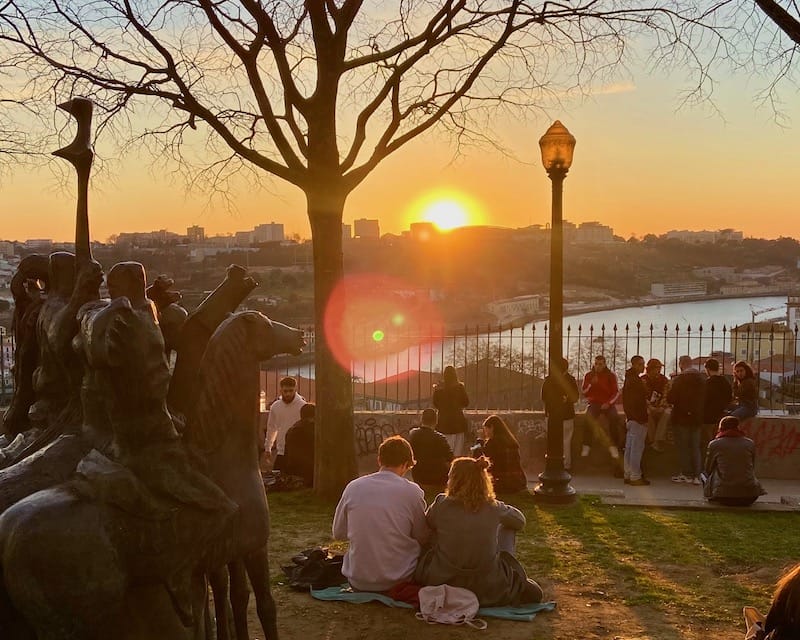
It’s hard to beat this river view when the sun begins to set. In the late afternoon, the small lawn is taken over by people with books, doing yoga, or setting up a picnic. More recently, Musa, one of the most popular craft breweries in the country, opened a brewpub called Musa das Virtudes, with a varied musical program (from DJs to samba concerts) and delicious snacks. At the camp-style outdoor tables, you can watch everything around you with a pint of tap beer – from over 15 options. The menu has fried chicken sandwiches, fritters (as Portuguese culture requires), and vegetarian options, such as grilled mushroom skewers.
Since it’s springtime, dusk is not an excuse to go home. A stroll along Rua das Flores (Flowers Street), one of Porto’s most historic shopping streets, is not just a semantic coincidence; it is one of the arteries that keeps the city buzz alive. Among design stores, bookshops (such as Chaminé da Mota, one of the oldest second-hand bookstores in the city), and cafes, it is a way to appreciate the life and old architecture of the town.

Built in 1521, the street was practically abandoned a few years ago, until it gained a new urban project that highlighted its importance to the city. Today, some of the best hotels in Porto and even top-quality restaurants and bars are located there. Recently opened, Bar Flôr is more like an antechamber of Cozinha das Flores, the restaurant led by renowned chef Nuno Mendes – a Portuguese chef born in Lisbon with a prominent career in some of the best restaurants in London – who is running his first-ever project in Porto.
The modern bar offers a creative menu for flavorful cocktails, such as the Clichet, gin infused with cod, coriander, amaranth, and Granny Smith apple, or their take on Martini, mixing vodka, tangerine pickle, and elderflower. If you’re hungry, cross the elegant and cozy lounge with leather armchairs and a kitchen in the middle of the restaurant. From the open-grilled embers come snacks that have become classics, such as the turnip pasteis de nata (custard tart) served with caviar, and sponge cake with shrimp from the coast. If the idea is a more substantial meal, there are dishes such as grilled beef veal with tender onions, walnuts, and bone marrow or brothy rice (a Portuguese classic) made with blue lobster. Spring never tasted so good.
This article was originally published on April 17, 2023.
Rafael TononRafael Tonon
Published on April 22, 2024
Related stories
February 28, 2024
Food Tours NDQuick Bite: This full-day Istanbul market tour draws from our best-of list in the European side’s Karaköy neighborhood and the Asian Kadıköy, tied together by a Bosphorus crossing, visiting two markets on two continents. Our favorite Istanbul experiences include exploring the eateries in local markets and crossing the Bosphorus on the public ferry. The route for…
July 18, 2023
Porto | By Cláudia Brandão
PortoThose returning to Porto along the Luís I Bridge will notice a set of terraces to their right decorated with colored garlands, flags and string lights, as if someone forgot to take down their decorations after the June 23 São João festival, the city’s largest celebration. The garlands and flags stay up all year, though,…
July 17, 2023
IstanbulWith a main terminal of 1.44 million square meters, the new Istanbul Airport (IST) takes a lesson from its home city, paying homage to the gods of unnecessary sprawl and shopping malls. Rather than waste away under the fluorescent lights paying triple the price on duty free and forcing down disappointingly dry pide, store your…







































